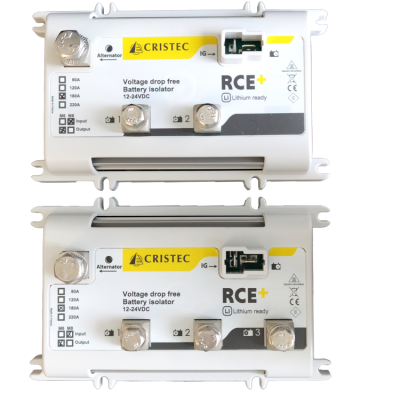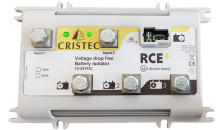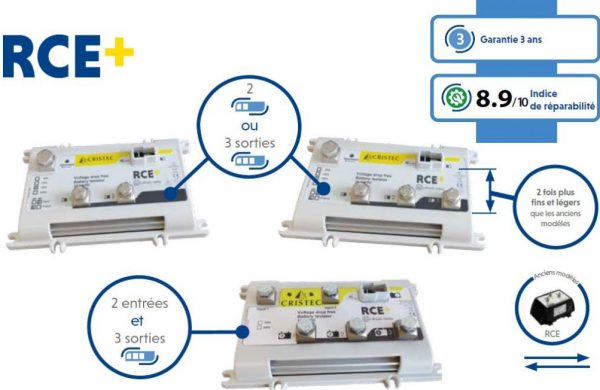ELECTRONIC BATTERY ISOLATORS RCE+
RCE+ battery splitters allow simultaneous charging of 2 or 3 batteries from one alternator without connecting the batteries together.
Discharging the house battery for example will not result in discharging the starter battery.
The DC input power source may be an alternator, a charger, a wind turbine, a solar panel, a hydrogenator, etc.
The RCE+ battery splitters have a negligible voltage drop compared to conventional diode models which generate a drop of the order of 0.7VDC.
They can be used with any type of generator including electronic models, thanks to its special IG (Ignition = priming) terminal.
The DC input power source will determine the rating of the battery isolator:
For a 120A alternator, choose a 180A isolator (if a battery is either deeply discharged or short-circuited, the available input current may flow through the isolator)
General characteristics
MOSFFET technology
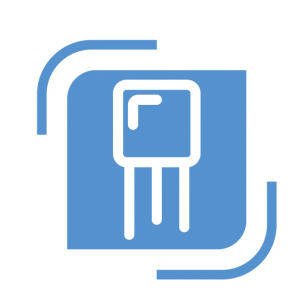 The technology used, based on MOSFET transistors, ensures negligeable voltage drop between the input and the outputs. This is a major advantage compared to a diode isolator.
The technology used, based on MOSFET transistors, ensures negligeable voltage drop between the input and the outputs. This is a major advantage compared to a diode isolator.
Voltage drop free
 Because there is no voltage drop due to RCE+ isolator, there is no need to increase the output voltage of the alternator.
Because there is no voltage drop due to RCE+ isolator, there is no need to increase the output voltage of the alternator.
Multi-voltage
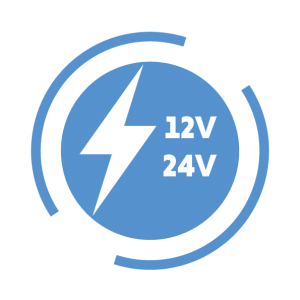 The isolator works with 12VDC and 24VDC voltage, and also allows the use of LiFePO4 (Lithium) batteries.
The isolator works with 12VDC and 24VDC voltage, and also allows the use of LiFePO4 (Lithium) batteries.
2 ou 3 sorties
 The RCE+ is used to split an input power source (alternator, solar regulator, hydrogenerator, etc.) to two or three consumers (batteries, consumers)
The RCE+ is used to split an input power source (alternator, solar regulator, hydrogenerator, etc.) to two or three consumers (batteries, consumers)
IGNITION ready
 Some alternators need DC voltage on the + output to start charging. Inserting a battery isolator will prevent any return voltage from the battery and the alternator will not start. The RCE+ splitters have an IG Input that will power the + output when switching on the engine.
Some alternators need DC voltage on the + output to start charging. Inserting a battery isolator will prevent any return voltage from the battery and the alternator will not start. The RCE+ splitters have an IG Input that will power the + output when switching on the engine.
Interchangeability
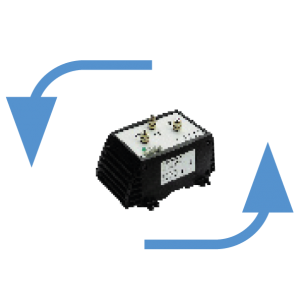 The RCE+ is designed to be fully interchangeable
The RCE+ is designed to be fully interchangeable
with previous RCE without any modifications.

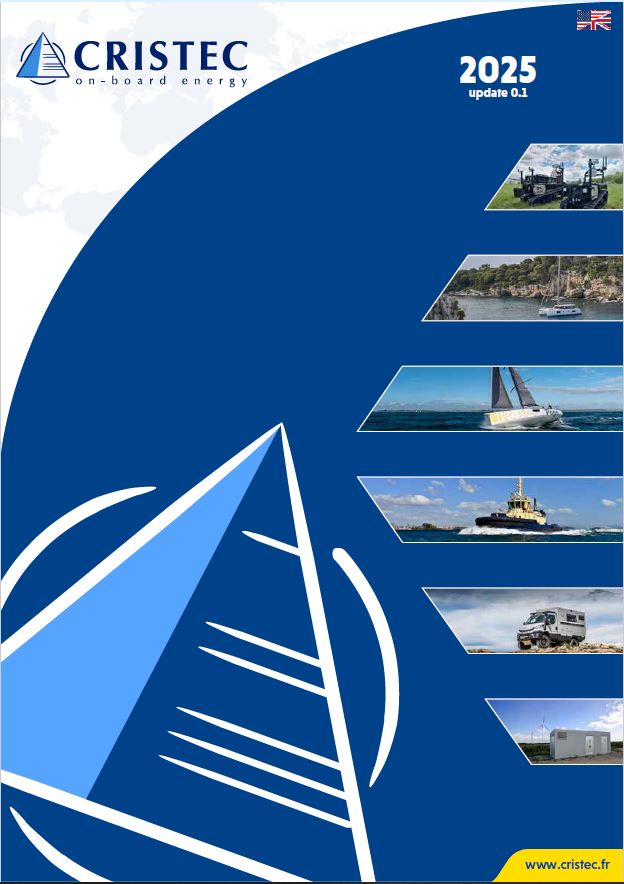
 The technology used, based on MOSFET transistors, ensures negligeable voltage drop between the input and the outputs. This is a major advantage compared to a diode isolator.
The technology used, based on MOSFET transistors, ensures negligeable voltage drop between the input and the outputs. This is a major advantage compared to a diode isolator. Because there is no voltage drop due to RCE+ isolator, there is no need to increase the output voltage of the alternator.
Because there is no voltage drop due to RCE+ isolator, there is no need to increase the output voltage of the alternator. The isolator works with 12VDC and 24VDC voltage, and also allows the use of LiFePO4 (Lithium) batteries.
The isolator works with 12VDC and 24VDC voltage, and also allows the use of LiFePO4 (Lithium) batteries. The RCE+ is used to split an input power source (alternator, solar regulator, hydrogenerator, etc.) to two or three consumers (batteries, consumers)
The RCE+ is used to split an input power source (alternator, solar regulator, hydrogenerator, etc.) to two or three consumers (batteries, consumers) Some alternators need DC voltage on the + output to start charging. Inserting a battery isolator will prevent any return voltage from the battery and the alternator will not start. The RCE+ splitters have an IG Input that will power the + output when switching on the engine.
Some alternators need DC voltage on the + output to start charging. Inserting a battery isolator will prevent any return voltage from the battery and the alternator will not start. The RCE+ splitters have an IG Input that will power the + output when switching on the engine. The RCE+ is designed to be fully interchangeable
The RCE+ is designed to be fully interchangeable